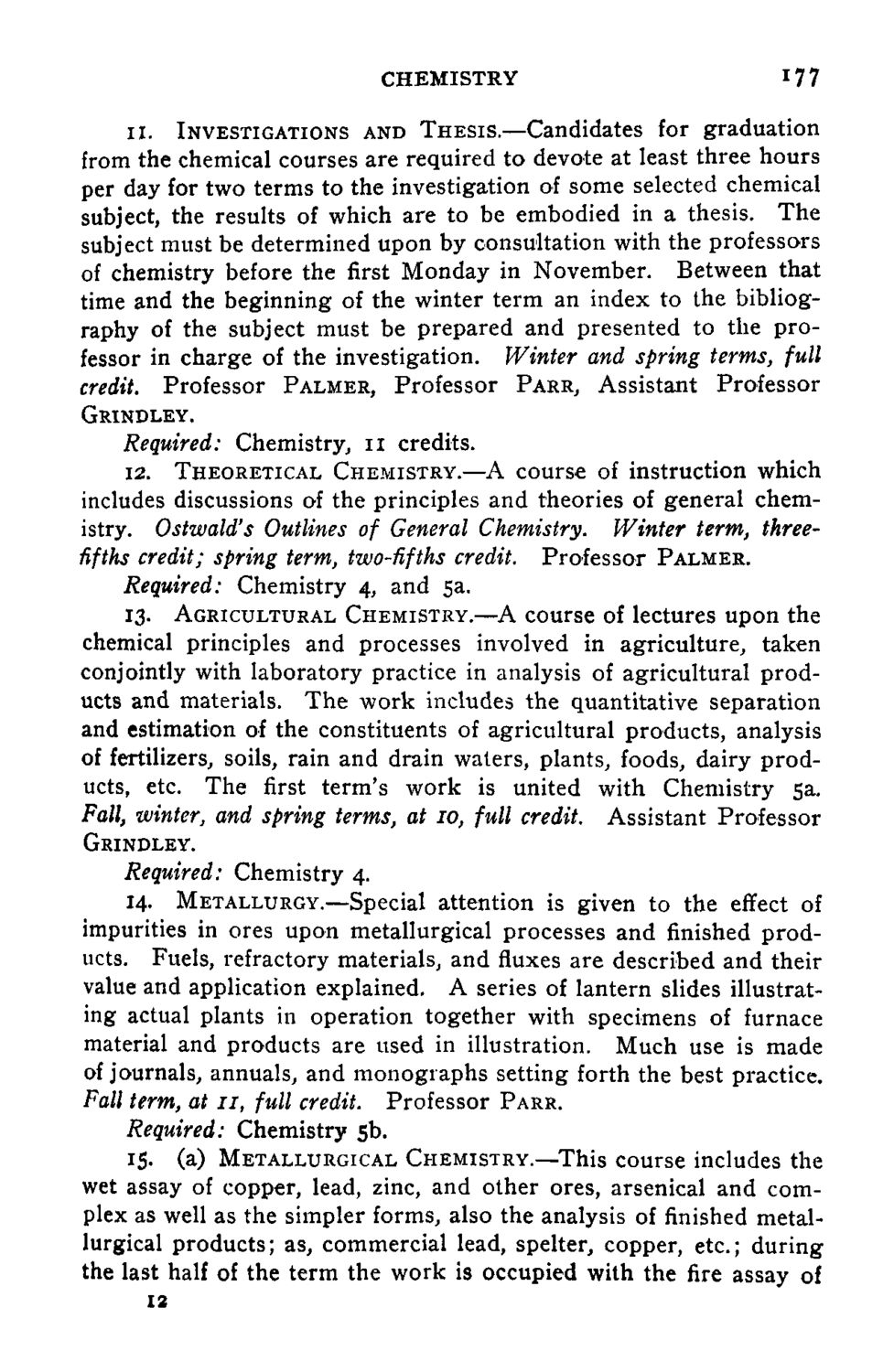| |
| |
Caption: Course Catalog - 1897-1898
This is a reduced-resolution page image for fast online browsing.

EXTRACTED TEXT FROM PAGE:
CHEMISTRY 11. 177 INVESTIGATIONS AND THESIS.—Candidates for graduation from the chemical courses are required to devote at least three hours per day for two terms to the investigation of some selected chemical subject, the results of which are to be embodied in a thesis. The subject must be determined upon by consultation with the professors of chemistry before the first Monday in November. Between that time and the beginning of the winter term an index to the bibliography of the subject must be prepared and presented to the professor in charge of the investigation. Winter and spring terms, full credit. Professor PALMER, Professor PARR, Assistant Professor GRINDLEY. Required: Chemistry, n credits. 12. THEORETICAL CHEMISTRY.—A course of instruction which includes discussions of the principles and theories of general chemistry. Ostwald's Outlines of General Chemistry. Winter term, threefifths credit; spring term, two-fifths credit. Professor PALMER. Required: Chemistry 4, and 5a. 13. AGRICULTURAL CHEMISTRY.—A course of lectures upon the chemical principles and processes involved in agriculture, taken conjointly with laboratory practice in analysis of agricultural products and materials. The work includes the quantitative separation and estimation of the constituents of agricultural products, analysis of fertilizers, soils, rain and drain waters, plants, foods, dairy products, etc. The first term's work is united with Chemistry 5a. Fall, winter, and spring terms, at 10, full credit. Assistant Professor GRINDLEY. Required: Chemistry 4. 14. METALLURGY.—Special attention is given to the effect of impurities in ores upon metallurgical processes and finished products. Fuels, refractory materials, and fluxes are described and their value and application explained. A series of lantern slides illustrating actual plants in operation together with specimens of furnace material and products are used in illustration. Much use is made of journals, annuals, and monographs setting forth the best practice. Fall term, at 11, full credit. Professor PARR. Required: Chemistry 5b. 15. (a) METALLURGICAL CHEMISTRY.—This course includes the wet assay of copper, lead, zinc, and other ores, arsenical and complex as well as the simpler forms, also the analysis of finished metallurgical products; as, commercial lead, spelter, copper, etc.; during the last half of the term the work is occupied with the fire assay of 12
| |